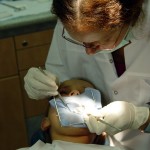
The exclusion of moisture and microbes during restoration placement are considered to be important factors for success. Cotton wool rolls and aspiration are typically used for moisture control although rubber dam isolation was first introduced in 1864. Rubber dam offers advantages in terms of, better isolation, improved visibility, soft tissue retraction and has been recommended for routine care during the coronavirus disease (COVID-19) pandemic. There are however disadvantages including, patient acceptability, application time and material costs.
The aim of this Cochrane review update was to assess the effects of rubber dam isolation compared with other types of isolation used for direct and indirect restorative treatments in dental patients.
Methods
Searches were conducted in the Cochrane Oral Health’s Trials Register, Cochrane Central Register of Controlled Trials (CENTRAL), Medline, Embase, LILACS, SciELO, Chinese BioMedical Literature Database, VIP database (Chinese), China National Knowledge Infrastructure, ClinicalTrials.gov, World Health Organization International Clinical Trials Registry Platform, OpenGrey and Sciencepaper Online databases with no language or date restrictions. Randomised controlled trials (RCTs) (including split- mouth designs) of rubber dam isolation over one month in length conducted in patients undergoing any type of direct or indirect restorative treatment were considered.
Two reviewers independently screened and selected studies, extracted data, and assessed the risk of bias of the included studies using the Cochrane domains-based approach. The primary outcome was survival rate of the restorations at 6 months, 1, 2, 5 and 10 years after restorative treatments. This was expressed as hazard ratio (HR) or risk ratio (RR) with 95% confidence interval (CI). The overall certainty of the evidence was assessed using GRADE.
Results
- 6 RCTs involving a total of 1342 patients (233 lost to follow up) were included.
- 5 studies compared rubber dam with traditional cotton rolls isolation. One study was excluded from the analysis due to data inconsistencies.
- 3 studies reported survival rates of the restorations with a minimum follow-up of six months.
- Pooled data from two studies involving 192 participants (low-certainty evidence) indicated rubber dam isolation may increase the survival rates of direct composite restorations of non-carious cervical lesions (NCCLs) at 6 months, odds ratio (OR)= 2.29 (95%CI;1.05 to 4.99)
- However, data from 1 study (30 participants; very low-certainty evidence) found rubber dam use in NCCLs composite restorations may have little to no effect on the survival rates of the restorations compared to cotton rolls
- at 12 months, OR =1.38 (95%CI; 0.45 to 4.28)
- at 18 months, OR = 1.00 (95% CI; 0.45 to 2.25).
- At 24 months, the use of rubber dam may decrease the risk of restoration failure in children undergoing proximal atraumatic restorative treatment in primary HR = 0.80 (95%CI; 0.66 to 0.97) [1 study, 559 participants; very low-certainty evidence].
- None of the included studies mentioned adverse effects or reported the direct cost of the treatment.
Conclusions
The authors concluded: –
This review found some low-certainty evidence that the use of rubber dam in dental direct restorative treatments may lead to a lower failure rate of the restorations compared with cotton roll usage after six months. At other time points, the evidence is very uncertain. Further high-quality research evaluating the effects of rubber dam usage on different types of restorative treatments is required.
Comments
This review updates the 2016 Cochrane review (Dental Elf – 26th Sep 2016) increasing the number of included RCTs from 4 to 6 with a majority of the studies (5) comparing rubber dam with cotton wool roll isolation. The findings provide low certainty evidence that rubber dam improves NCCL restoration outcomes at 6 months but there is little evidence to beyond this so further high-quality studies are needed. As noted by the reviewers the impact on restoration survival is not the only reason for using rubber dam during restorative treatment. It also offers protection from swallowing instruments or tooth fragments and reduces cross-infection an important consideration during the current COVID-19 pandemic.
Links
Primary Paper
Miao C, Yang X, Wong MCM, Zou J, Zhou X, Li C, Wang Y. Rubber dam isolation for restorative treatment in dental patients. Cochrane Database of Systematic Reviews 2021, Issue 5. Art. No.: CD009858. DOI: 10.1002/14651858.CD009858.pub3.
Other references
Cochrane Oral Health Blog: Does using a rubber dam to isolate teeth from the rest of the mouth during a dental procedure improve the success of tooth repairs?
Dental Elf – 26th Sep 2016
